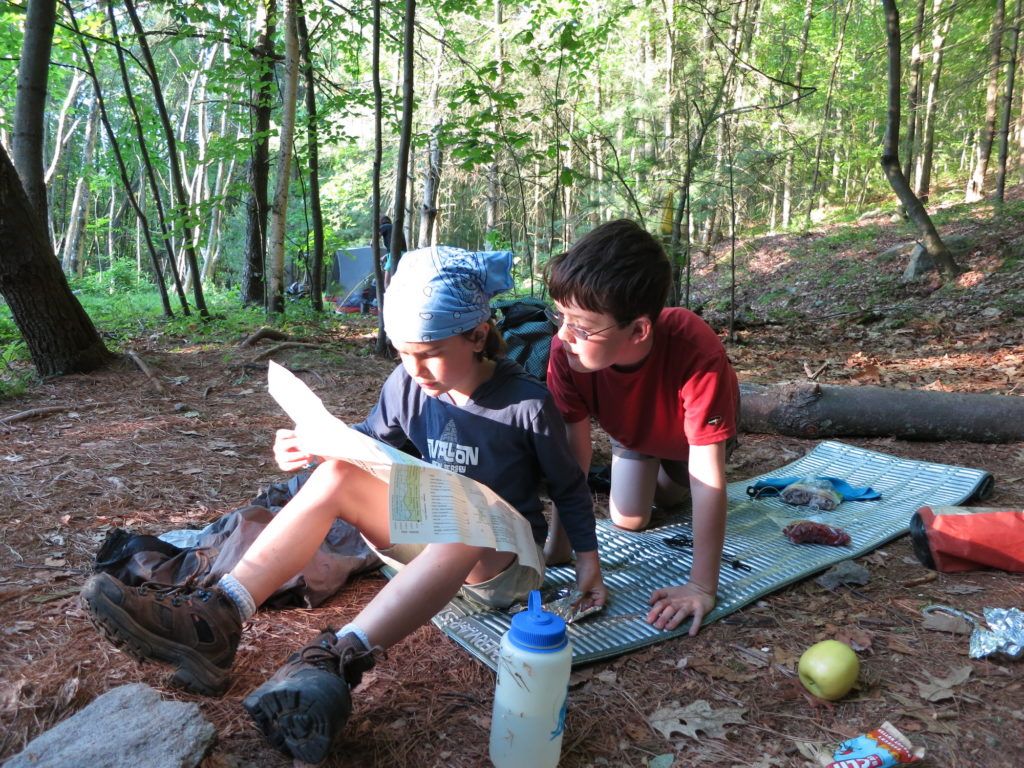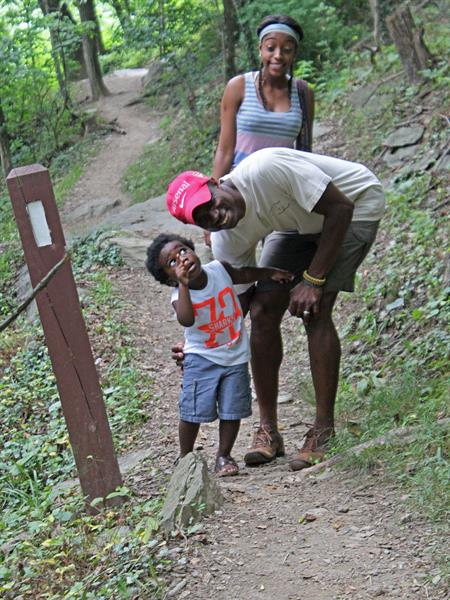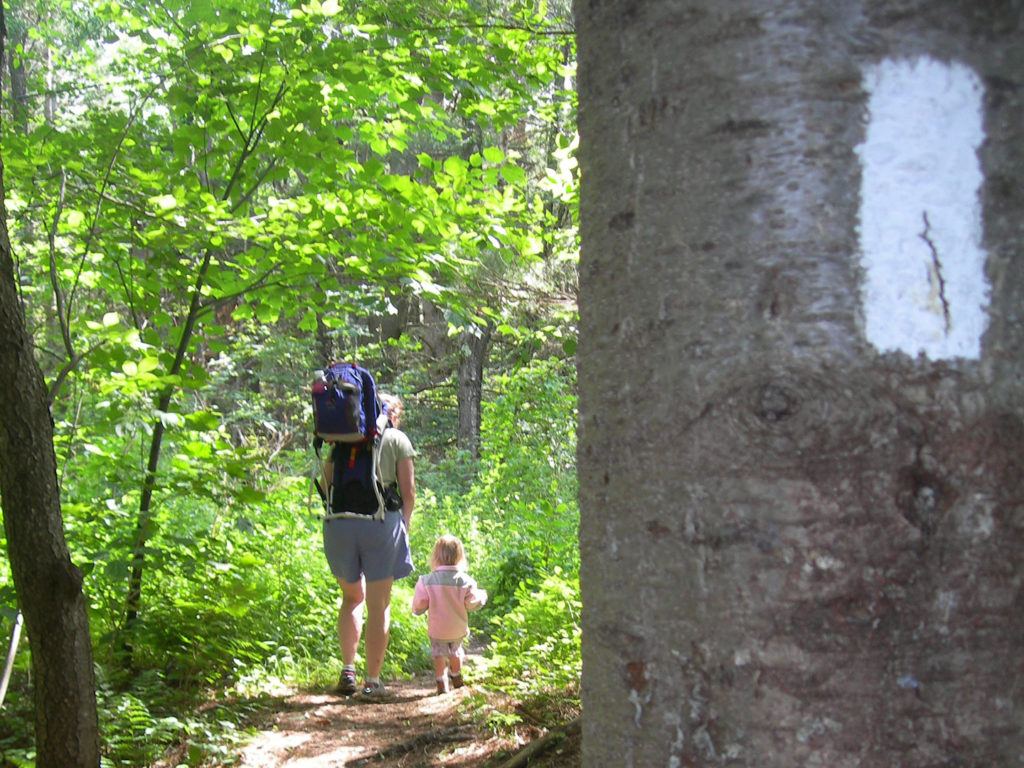by Alyson Browett
Planning a Family Hike: Reconnecting Your Loved Ones with the Outdoors
September 21, 2018
Thousands of tired, nerve-shaken, over-civilized people are beginning to find out that going to the mountains is going home; that wildness is a necessity; and that mountain parks and reservations are useful not only as fountains of timber and irrigating rivers, but as fountains of life.
John Muir, “Our National Parks,” 1901
If naturalist and conservationist John Muir could see our technology-obsessed society today, more than a century after writing those words, what would he say? What would his advice to us be if he knew the average American spends 93% of their time indoors, whether at home, at an office or school, in a store or restaurant, or in a vehicle?
Start with a Plan, Even a Small One
 Author and long-distance hiker and cyclist Cindy Ross has been on some grand family adventures — including hiking the Continental Divide National Scenic Trail with her husband, two young children, and llamas — but she suggests starting small.
Author and long-distance hiker and cyclist Cindy Ross has been on some grand family adventures — including hiking the Continental Divide National Scenic Trail with her husband, two young children, and llamas — but she suggests starting small.
“Get outside and get the kids hiking and playing in nature,” Ross offers, noting the Appalachian Trail (A.T.) is a great destination but green spaces and parks close to home can offer similar possibilities.
“Do something the least scary first,” says Ross, who recently released her seventh book, titled “The World is Our Classroom: How One Family Used Nature and Travel to Shape an Extraordinary Education.” You can walk a short trail, have a picnic or look at a view, and go back to the car. You can then plan a longer hike for the next trip, or go with someone more experienced to show you new pathways. “Join a local hiking club and go out on their organized hikes,” Ross says. “That’s how I learned back when I was a 15-year-old!”
Jennifer Pharr Davis, hiker, author, speaker and 2012 National Geographic Adventurer of the Year, says it is important to include children’s interests in hike planning and execution. Davis believes the more people who are involved in the planning of a hike, the better. Ask your kids or hiking mate if they’d rather see a waterfall or a beautiful mountain vista. What snacks do we want? What supplies do we need to take?
“An inclusive process makes a hike feel like more of an adventure, especially for kids,” Davis notes.
Emphasize the Experience
As the first woman to set the fastest known time record on the A.T. and the author of the recently published book “The Pursuit of Endurance,” Davis knows a few things about goal-setting and speed hiking. But, she says, when you hike with children or newer hikers, having a “goal” of distance, speed or destination is unnecessary.
“It’s much more about the experience,” she notes. “A ‘goal’ doesn’t define the hike. The goal should be to have fun. We constantly take note of how everyone’s feeling, and if it’s time to turn around, we do that.”
“Being in nature is one of the best forms of therapy,” Davis adds. “A common hiker saying is ‘The trail gives you what you need.’ I don’t know exactly what people need, but I’m willing to bet they can find it on the trail.”
Nurture the Creative Side
“The natural world feeds a person’s senses in a way that nothing else can,” Ross says, adding, “As a result, a young person can develop their creativity, as the trail gives them the free time to think, wonder and imagine — it stimulates them in a deep and fundamental way.”
Davis says one of her daughter Charlie’s favorite hiking activities is to dress up as a princess and have the family craft stories along the trail. She also recommends taking an art kit and planning stops along the way to paint or color.
“Sometimes we include sticks or small pinecones in artwork created while hiking,” notes Davis, who has hiked in all 50 states with Charlie and often goes out with her husband, musician and hiker Brew Davis, and son Gus.
Be Present
 “Hiking allows you to be more present,” says Davis, who, along with Brew, co-authored the book “Families on Foot: Urban Hikes to Backyard Treks and National Park Adventures.”
“Hiking allows you to be more present,” says Davis, who, along with Brew, co-authored the book “Families on Foot: Urban Hikes to Backyard Treks and National Park Adventures.”
“If you’re going out with kids or anyone else, or even by yourself, hiking allows you to focus on time with your family, friends or your own thoughts without the daily distractions of chores and commitments,” says Davis. “You can enjoy who is around you — or who is not around you!”
Ross agrees: “The greatest benefit [of hiking] that I have observed in my own family is how close we all became from spending large amounts of time together in the wilds, without distractions. It was just our family sharing wonder and beauty and challenges, which created lasting memories and acted as a glue to hold our family together for the rest of our lives.”
Cultivate Appreciation
In the forward to “Our National Parks,” Muir wrote that he wished to incite the people “to come and enjoy them, and get them into their hearts, that so at length their preservation and right use might be made sure.”
Taking younger people or inexperienced hikers into beautiful places helps cultivate appreciation for those places. The next generation will help determine the future of how America values its undeveloped and public lands. If people have never experienced the vastness of standing atop Roan Mountain or the hug of the A.T.’s “green tunnel,” they may not feel a connection to the land or lend support when open lands are threatened.
Ross says, “Do everything you can to make sure those first hikes are stellar experiences so they will want more. You are never too young — or too old — to start hiking.”
Give Confidence a Boost
Most people have some healthy fear of the outdoors, whether they are experienced hikers or new to walking on trails. But the more you prepare for and spend time outside, the more confident and knowledgeable you and your family or friends will become.
While hiking the Continental Divide Trail across five summers beginning in 1993, Ross says her children were able to develop a broad base of knowledge, virtues and values such as bravery, common sense and trust.
“When a parent considers all the scary challenges ahead for their child as he or she grows into adulthood, you want a solid foundation under them,” Ross says, adding, “These things naturally develop and grow from a childhood spent hiking and adventuring with their parents.”

